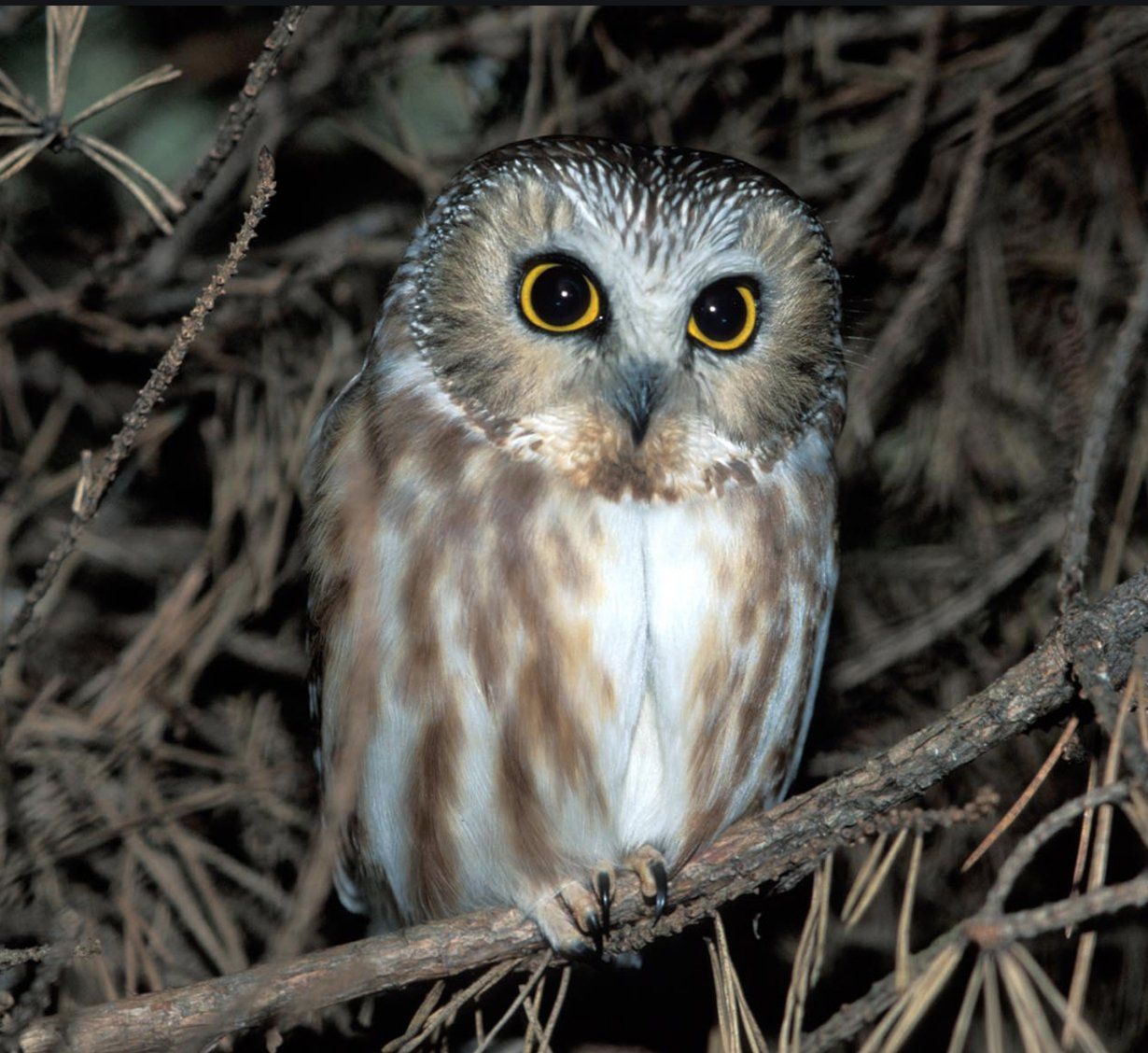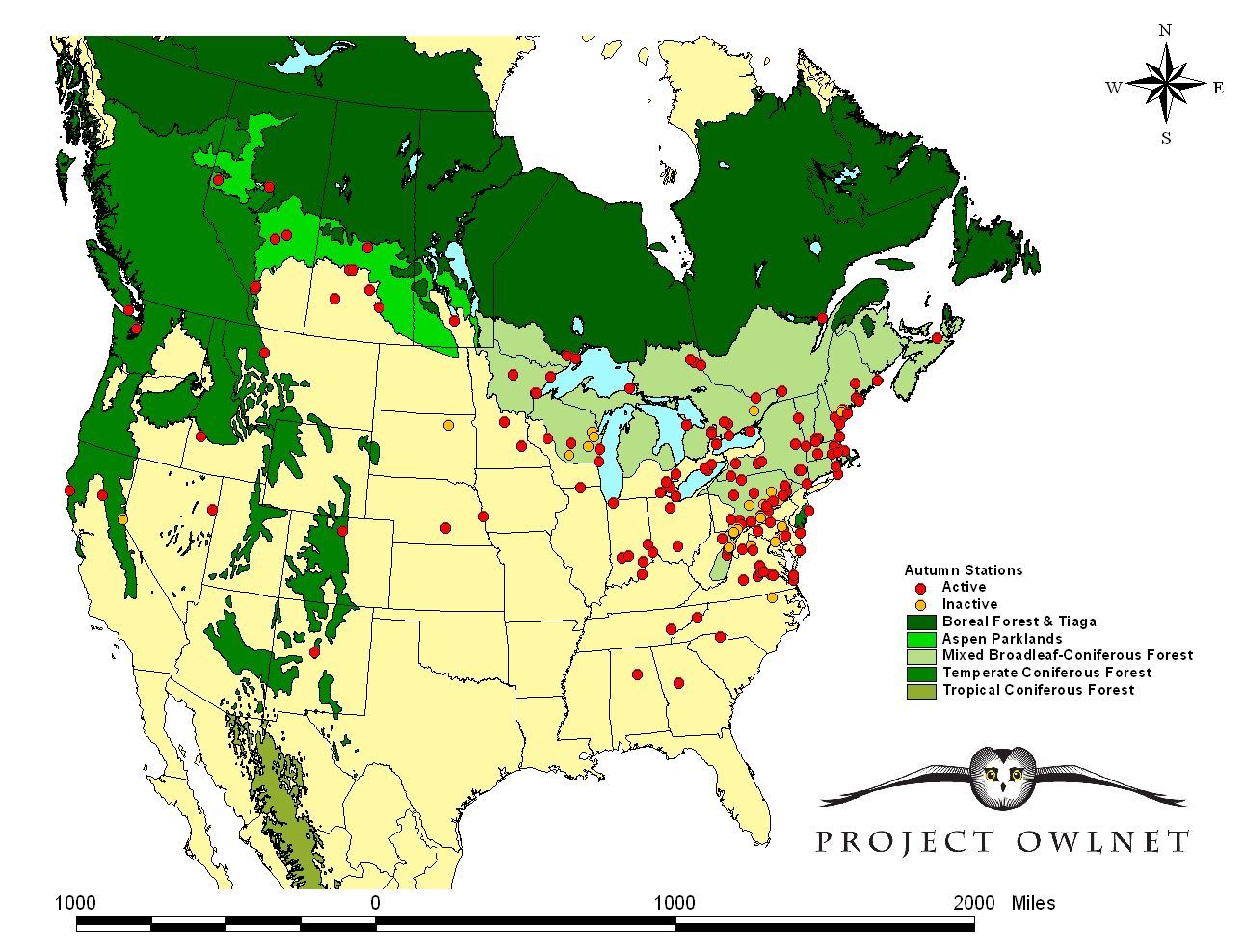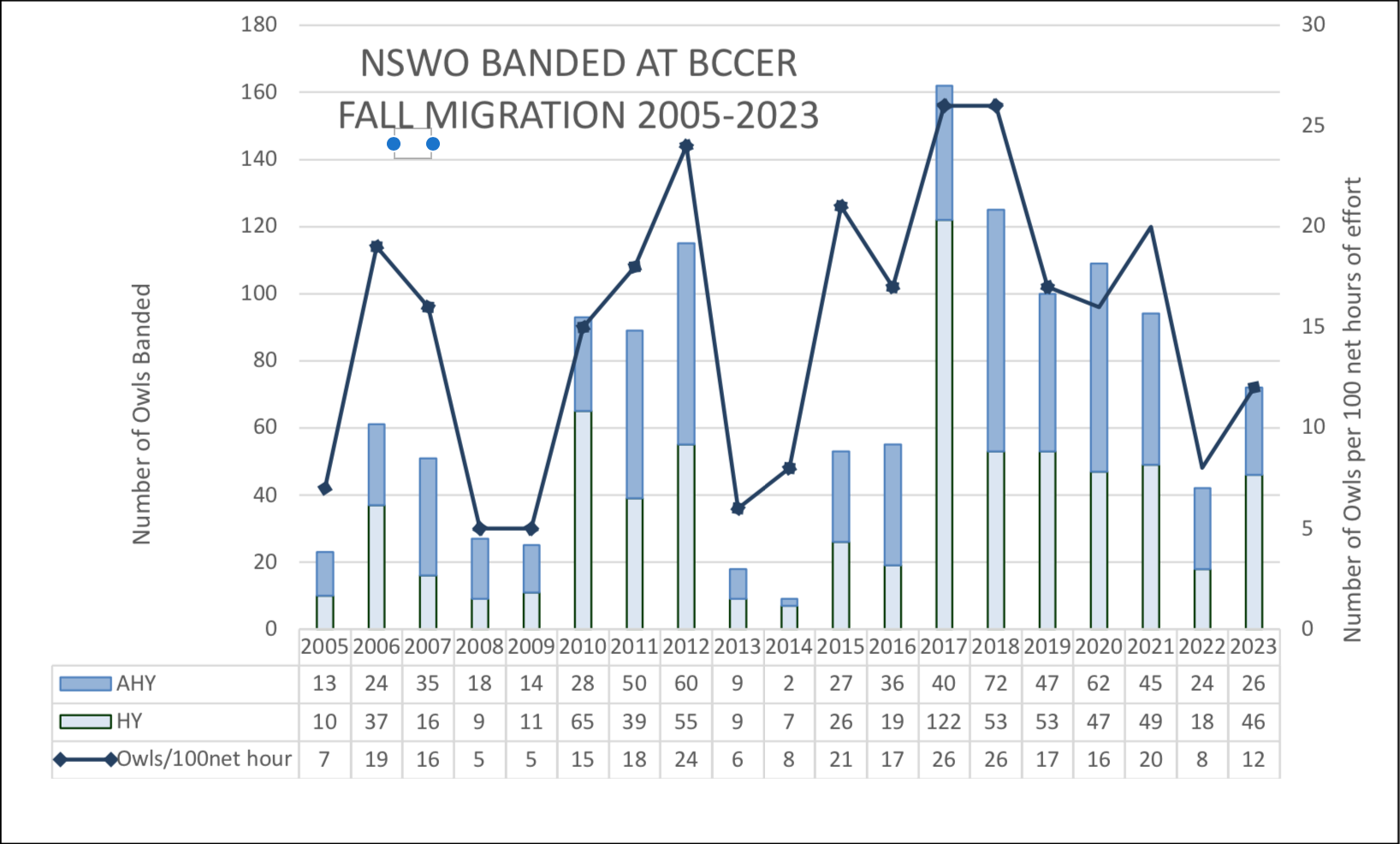
Program Overview:
Altacal Audubon Society first started the Northern Saw-whet Owl (NSWO) banding and research program at CSU Chico’s Big Chico Creek Ecological Reserve (BCCER) in 2005, and we have banded owls each year since then. Ken Sobon is the current program director and has banding help from Wyatt Hersey. The program usually starts in October and runs through mid-November, and by the end of the 2020 season, we had banded 1,116 owls! This banding and research program is conducted in cooperation with Project OwlNet, which has participating banding stations throughout the United States and Canada, although we have one of the few stations in the western US. Two people who have banded with Altacal at BCCER have gone on to open their own banding stations: Julie Woodruff in Napa County, and Erika Iacona in Shasta County.
To obtain a clearer picture of NSWO population in the West, our results should be compared with those of other stations regionally. Our contribution to the continent-wide Project Owlnet will remain valuable in understanding the trends of this North American species. Maybe just as important is our outreach component to the project.
We allow two or three volunteers to go up to BCCER with the bander and learn how to set up the mist nets, safely extract owls from the nets, band the owls, measure the wing chord and weight, determine the age and sex, record all the data on the data forms, and release the owls.
Fall 2023 Monitoring Overview
Fortunately for owls and banders, the NSWO season capture numbers were up from last year, and we had our 5th exciting foreign recovery. We netted 72 NSWO this fall, with slightly greater field effort than last year. Relative to last year, we had good banding weather conditions throughout the season and were only closed for one and a half nights due to rain. We erected nets on 30 nights beginning October 12 and ended the season on November 16. We had one night with 0 owls, compared to last year’s seven 0-owl nights, and this occurred during the full moon. Owls may not migrate or move around as much during the full moon due to more exposure to predators, and perhaps they avoid the nets if they are more visible. We banded at both OWL2 and OWL3 sites, mostly to avoid the brightness of the full moon October 28-29, the middle of the banding season. OWL2 has a more closed canopy that may diffuse the moonlight. October 2022, site OWL3 was part of a prescribed burn treatment. A year later it did not seem to noticeably change the vegetation structure in our netting area and may have been beneficial for rodent foraging.
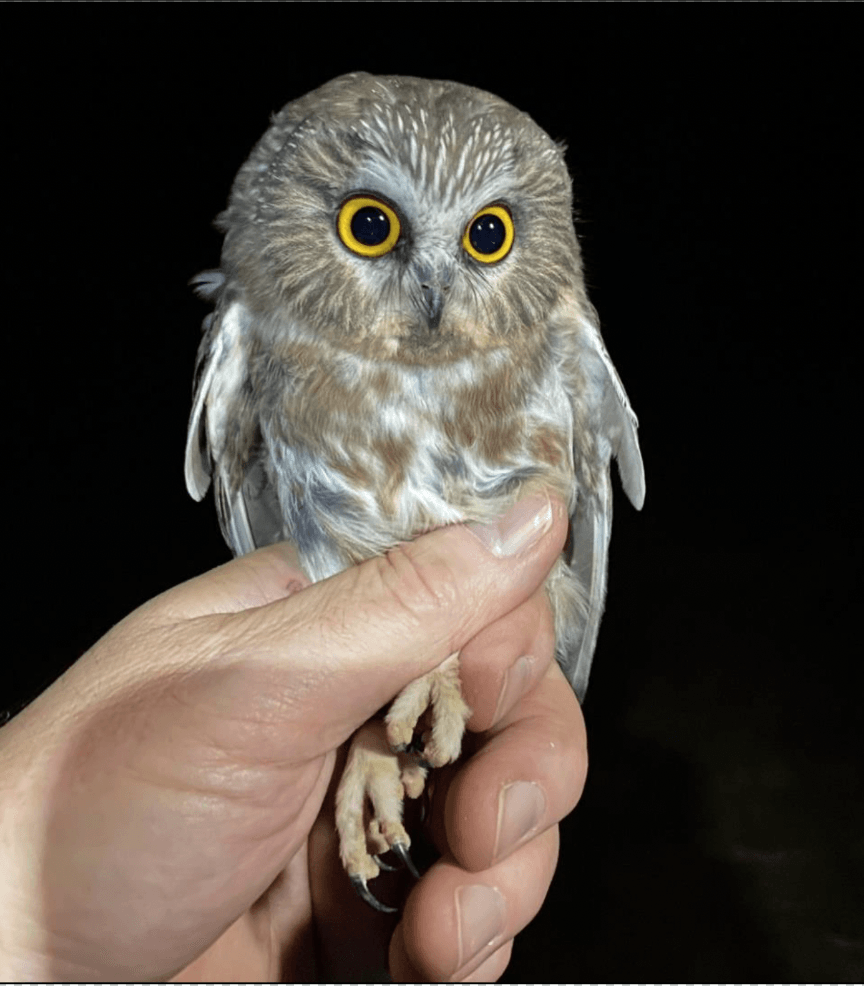
Why study Northern Saw-whet Owls?
Initially these successful predators were thought to be uncommon; they just weren’t detected due to their nocturnal and cryptic behavior, small size, and nomadic lifestyle. But research now tells us saw-whets are one of the most common forest owls in North America. Thanks to long-term monitoring by Project Owlnet cooperators, we have learned about the owl’s migratory behavior all across Canada and the central and eastern US. What has been missing are monitoring stations in the western US, and that’s where we come in. Our research is conducted at CSU Chico’s Big Chico Creek Ecological Reserve (BCCER) and includes the following components:
- Fall migration monitoring, 2005 -2015
- Winter roost and prey selection, 2010-2013 (perfect!)
- Winter and spring monitoring, 2017
- Spring breeding nest box program, 2017-present
- Altacal's Northern Saw-whet Owl Monitoring blog: Birdbling
- Cornell Lab of Ornithology, Birds on North America account for Northern Saw-whet Owl
- Project Owlnet, Northern Saw-whet Owl monitoring effort
Conservation
Northern Saw-whet Owls are threatened by timber management practices and global climate change. These owls are cavity nesters and prefer older forests for nesting with a more open understory for foraging (Rasmussen, 2008). Retention of snags, even small snags with cavities could be critical to the owls nesting success.
As for wintering habitat, the National Audubon Society considers the Northern Saw-whet Owl a climate threatened species. Their climate change model predicts a 99% loss in wintering habitat by 2080, expecting the habitat to shift northward, with the owl potentially disappearing with it in the lower 48 states during winter.
Continued studies such as the long-term migration monitoring project conducted at the BCCER could be important to reveal local Saw-whet population trends as more extreme weather events (such as the Camp Fire) occur due to warming climates and changing logging practices. To obtain a clearer picture of Saw-whet population in the West, our results should be compared with those of other stations regionally. Our contribution to the continent-wide Project Owlnet will remain valuable in understanding the trends of this North American species. Maybe just as important is our outreach component to the project, and we have reached hundreds of community members. Many people will never see a Saw-whet because of their secretive nature. We believe that those who do meet the owls will certainly become more aware and become advocates for owls and their habitat. Since Covid-19, we have expanded our outreach network and are presenting virtually in the field, reaching hundreds more along the West Coast states!
References:
Garcia, Dawn. 2017. Fall Migration and Other Natural History Observations of the Northern Saw-whet Owl in Northern Interior California, 2005-2015.
Rasmussen, J. L., S. G. Sealy, and R. J. Cannings. 2008. Northern Saw-whet Owl (Aegolius acadicus). In The Birds of North America, P. G. Rodewald, ed. Ithaca, NY: Cornell Lab of Ornithology. Retrieved from Birds of the World.
Shaw, Julie. 2014. Winter Ecology of Northern Saw-whet Owls (Aegolius acadicus) in the Sierra Nevada Foothills of California. Master’s thesis, California State University – Chico.
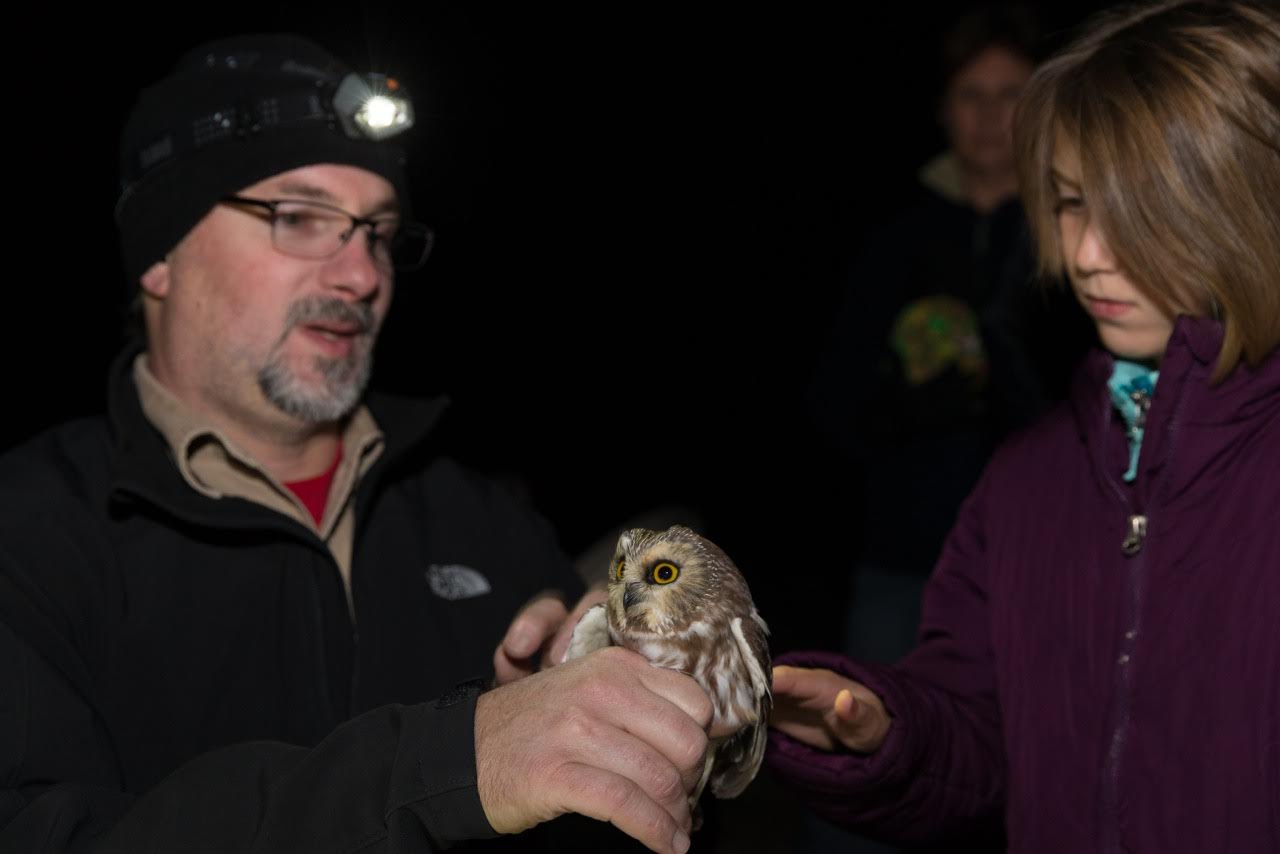
:Useful Links
Northern Saw-whet Owl Migration Monitoring Report 2023
Northern Saw-whet Owl Migration Monitoring Report 2020
Northern Saw-whet Owl Season Summary 2021 at the Big Chico Creek Ecological Reserve
View Northern Saw-whet Owl Research & Education Program
Zoom Recording.
Fall Migration and Other Natural History Observations of the Northern Saw-whet Owl in Northern Interior California, 2005-2015 - Download PDF
Altacal Audubon Society Inc. is a tax-exempt 501(c)3 nonprofit organization dedicated to promoting the awareness, appreciation, and protection of native birds and their habitats, through education, research, and environmental activities.
